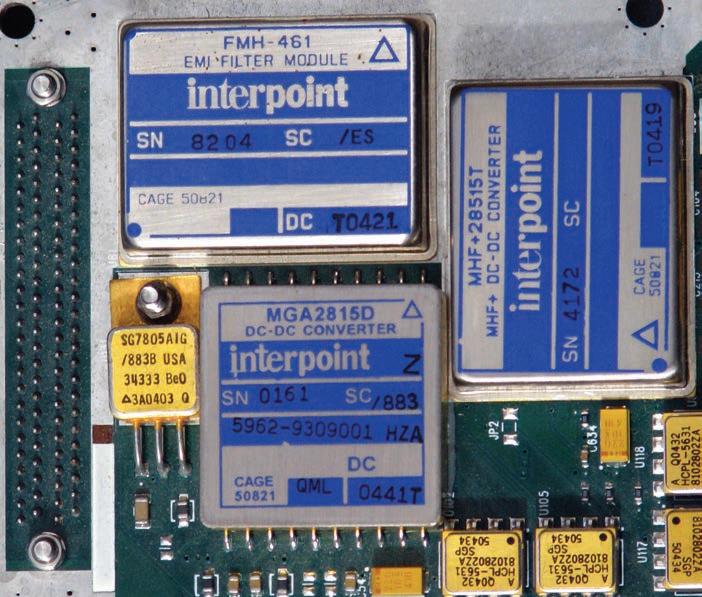
17 minute read
THE CONSUMMATE ENGINEER
from CC_259-2012
by Hiba Dweib
Photo 1—Two switching regulators and an EMI filter are the business end of the power supply. The external shield has been removed. the differential EMI (see Photo 1).
Off-the-shelf regulator modules may include some RF filtering, but in my experience it is usually insufficient. Therefore, external filters need to be added. The same applies to the output lines, which need additional bypass capacitors, such as C6, C7, and C8 as shown.
Advertisement
EMI STANDARDS
There are numerous standards guiding the EMI levels the equipment may generate and levels it must be immune to. Although the standards are similar, many industries—including medical, automotive, aerospace, commercial, and military—have their own versions, which, because of different test methods, are not always comparable. Devices for attenuation of the EMI are shown in Figure 1. The capacitors, chokes, common-mode choke, and filters do a good job. But sometimes even metal-enclosed switchers—such as those shown in Photo 1—need additional shielding two-stage protection. Typically, a pre- same potential. Consequently, a to reduce unwanted emissions. regulator will maintain the regulator heavy surge current may be flowing Power supplies are also exposed to module’s input voltage at a safe level. through the diodes, which need to be voltage spikes arriving on the input The transzorb with the choke and C1 rated accordingly. Using two tran- power leads. They can cause permaare acting as the first stage protection, szorbs in place of the diodes is some- nent damage, insulation breakdown, clamping the input voltage at a level times preferred for the transzorbs’s or degradation of the equipment. A safe for the pre-regulator (e.g., 80 V speed and ability to dissipate high- typical spike is depicted in Figure 2. for Linear Technology’s LT4356 surge pulse energy in a small package. stopper). For a higher voltage, you Switching regulators are notorious POWER SUPPLIES may have to design your own with for generating a lot of EMI which Note that 200-V spikes are not discrete components. propagate not only by radiation but uncommon and can cause serious
While the system grounds—including also by conduction through the damage. Fortunately, the spikes are the negative terminal of the battery— power leads. The module needs to be narrow and, therefore, of limited are connected to the chassis, it is a bad shielded, while balun (also called a energy. To effectively suppress them, idea for modern electronic subsys- common-mode choke) T1 together C1 has to be a low (equivalent series tems to use the chassis for power with capacitors C3, C4, and C5 filter resistance) ESR type. It is not unusureturn (G. Novacek, “My Analog the common mode-switching noise. al for C1 to be formed by a combinaWorld: The Significance of Ground- Two feed-through π filters attenuate tion of several capacitors, from large ing,” Circuit Cellar 244, electrolytics for the energy 2010). The chassis should storage down to small be used for transients and devices to effectively electromagnetic interfer- bypass high frequencies. ence (EMI) returns only. E In the first part of this Diodes D3 and D4 ensure series, I mentioned the that during heavy transients input voltage ripple, which the voltage difference is due to the rectification of between the power return the alternator voltage in the and the chassis doesn’t 12-V automotive system. In exceed one diode drop, addition to this ripple, because two points on a switching transients and chassis are rarely on the even audio frequencies may
Category A : E = 600 V Category B : E = 2 × line voltage (AC RMS and/or DC, or 200 V, whichever is less) 0 ms2 ms 10 ms 20 ms 30 ms 40 ms 50 ms 60 ms
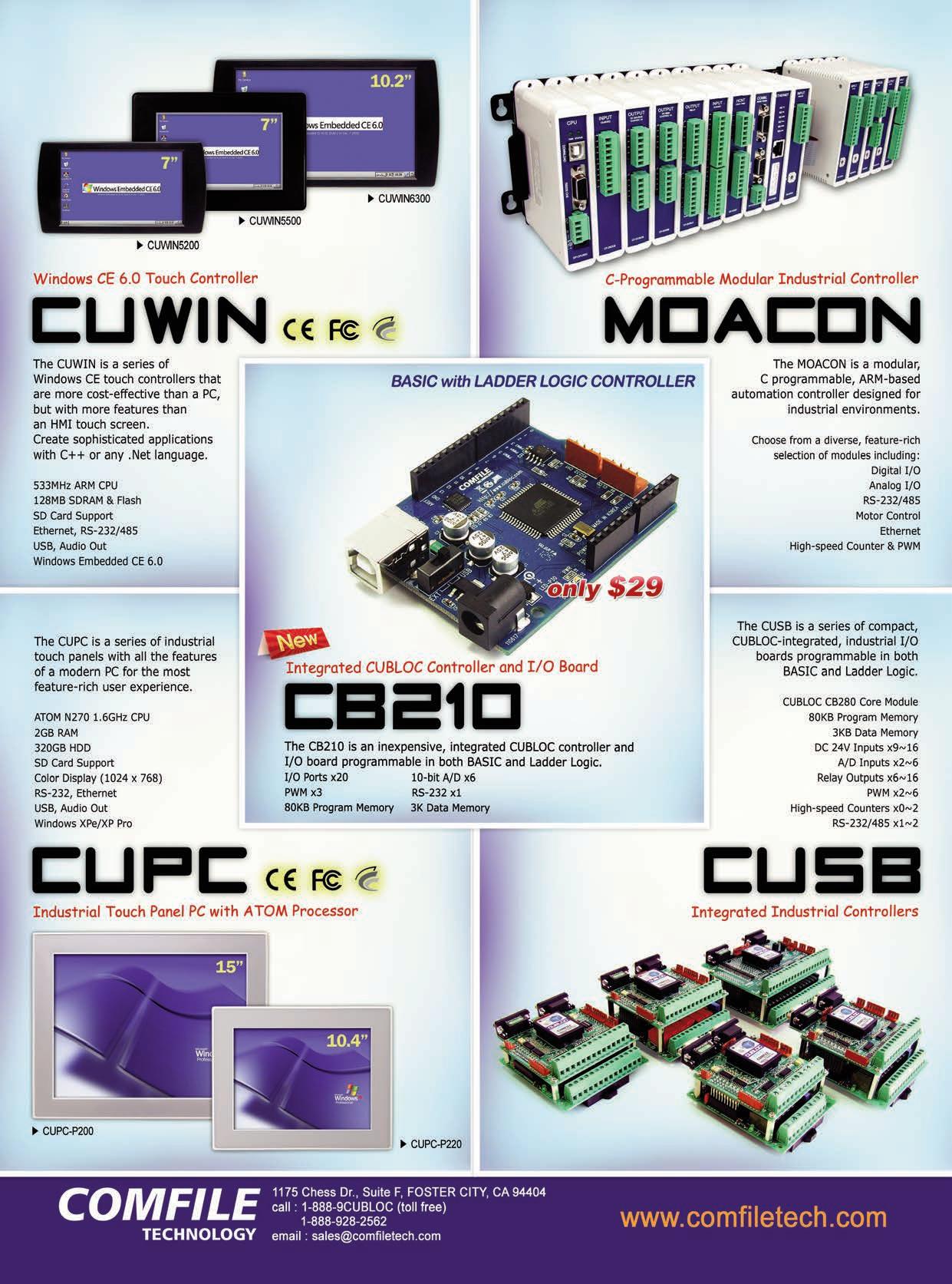
be induced onto the input wires by external magnetic fields. Up to 50 Hz or 60 Hz from close-by transformers are common, but also higher frequencies from sources such as alternators, speakers, and others—many of them with high harmonic content. Measurement of susceptibility to such interference is performed by injecting test frequencies up to 15 kHz into the power leads through a transformer. Their effective suppression depends mainly on the quality of L1, C1, and grounding.
Not all embedded controller power supplies work with battery-backed sources. Many power supplies use a transformer followed by a rectifier. Nevertheless, the principles of the design verification to ensure the power supply is robust and not the cause of unexpected behavior remain the same. Some components in Figure 1 may be eliminated, others may be added, and the input voltage range and power interrupt may be recalculated (all based on the primary power source). Input transients or electromagnetic compatibility (EMC) may be more or less of a concern. The designer must carefully analyze all the characteristics of the primary power source and then take the steps to satisfy the application.
THD
Few embedded control engineers need to worry about primary AC power phase displacement, voltage and frequency modulation, and other issues seen in specialized AC supplies that are beyond the scope of this column. One issue, however, has become very important for power supplies working from an AC distribution net. It is the total harmonic distortion (THD) of the input power waveform. It can be calculated as:
where X represents current or voltage, X1 is the value at the fundamental frequency, and Xn are harmonics. The main cause of the THD is the rectifier charging the storage capacitor, causing distortion of the input AC current. The result is a low power factor and its repercussions are basically I2R losses. Some standards and specifications call for maximum allowed THD; others call for the minimum power factor. Both mean the same thing. Meeting those requirements often requires a power factor correction (PFC) circuit.
THD × = 100
n = 2
X
2
n
X1
POWER SUPPLY DESIGN
I hope you found this article series useful. My goal was to show you that a seemingly mundane job—such as power supply design—often evolves into a fairly complicated issue and must not be taken lightly. I
George Novacek (gnovacek@nexicom.net) is a professional engineer with a degree in Cybernetics and Closed-Loop Control. Now retired, he was most recently president of a multinational manufacturer for embedded control systems for aerospace applications. George wrote 26 feature articles for Circuit Cellar between 1999 and 2004. G. Novacek, “Building a Robust Power Supply (Part 1): Power Dissipation,” Circuit Cellar 258, 2012.
———, “My Analog World: The Significance of Grounding,” Circuit Cellar 244, 2010.
Department of Defense, Interface Standard, “MIL-STD461 Requirements for the Control of Electromagnetic Interference Characteristics of Subsystems and Equipment,” 1999, www.tscm.com/MIL-STD-461E.PDF.
“MIL-STD-704, Aircraft Electric Power Characteristics,” 2008, https://assist.daps.dla.mil/quicksearch/basic_ profile.cfm?ident_number=35901.
Radio Technical Commission for Aeronautics (RTCA), “New Revision G on Environmental Conditions and Test Procedures for Airborne Equipment,” DO 160, 2010, http://standardsforum.com/?p=464.
SOURCE
LT4356-1 and LT4356-2 Surge stoppers
Linear Technology, Inc. | www.linear.com
NEED-TO-KNOW INFO
Knowledge is power. In the computer applications industry, informed engineers and programmers don’t just survive, they thrive and excel. For more need-to-know information about some of the topics covered in this article, the Circuit Cellar editorial staff recommends the following content:
—
Portable Power
A Power Supply for Embedded Applications
by Jason Wu, Kiran Kanukurthy, and David Andersen Circuit Cellar 193, 2006
This team of designers built an inductively charged power supply for embedded applications. The portable system provides 100-mA, 3.3-V continuous power. Topics: Power Supply, LTC1325, Wireless, Inductive Charging, ATmega8, LM2621, Coil
— Quad Bench Power Supply by Brian Millier Circuit Cellar 149, 2002
How can you deliver an adequate power supply while keeping workbench clutter to a minimum? Brian decided to tackle this classic engineering conundrum with a small, low-capacity quad bench power supply. Topics: Power Supply, Floating, Metering, LCD, IRL520, TL082, MCP42010, MCP3202, ZXCT1009, Isolation, GMR, IL717, AT90S8535, SIMM100
— Go to Circuit Cellar’s webshop to find these articles and more: www.cc-webshop.com
An Analog Life (And a Lot More)
An Interview with Chris Gammell
Chris Gammell wears several hats (and safety goggles, when necessary). He currently runs a consulting business, maintains his own website, contributes to and administrates an engineering blog, and co-hosts The Amp Hour podcast with Dave Jones. In December, we discussed his many interests from FPGA-based projects to hardware design to the benefits of writing about what you know.—Nan Price, Associate Editor
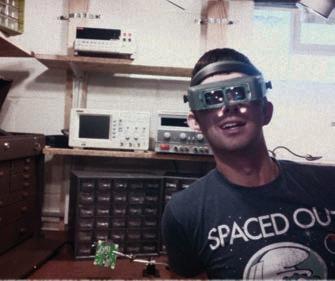
NAN: Where do you live and work?
CHRIS: I live and work in the suburbs of Cleveland, OH. Different suburbs though.
NAN: When did you start working with electronics? Was it something that piqued your interest when you were young?
CHRIS: No. Unfortunately, I was a late bloomer, as are many in my generation. I had limited exposure to electronics until halfway through high school. But once I learned it, I loved it! I wrote about my entrance to electronics on Engineer Blogs (http://engineer blogs.org/2011/02/fits-and-starts).
NAN: What types of microcontrollerbased systems do you like to design?
CHRIS: I’m not as much a microcontroller person so much as an FPGAwith-the-occasional-embedded-micro kind of person. I love parallel logic and designing hardware, even if it’s on-chip hardware. I have done some little projects using Texas Instruments’s MSP430 microcontrollers and Arduinos, but nothing to speak of. I’m trying out a BeagleBone right now though, and I’m very excited about it!
NAN: Give us some background on your education.
CHRIS: I went to Case Western Reserve University (CWRU) right here in Cleveland, OH. I think I have a penchant for gloomy weather or something. (I grew up in Buffalo to top it off!) However, I haven’t been here the whole time. I moved to Austin, TX, for a few years to try out some different types of work and more sunshine than I had seen in the previous 20 years. My degree in school was a BSEE, and I focused on signals and circuits. I enjoyed CWRU a lot, for the people and for the opportunities afforded me.
NAN: Can you tell us about some of the electronics projects you worked on in college?
The engineer at work CHRIS: My final project was actually another FPGA-based design. Me and a couple buddies worked on an audio-to-MIDI converter. The project was completed successfully but sat in a drawer henceforth, so it never quite went anywhere. Like a lot of college students, we had dreams of taking it to mass market before we realized it was a crude idea and a product that no one wanted. Ah, the tough realities of marketing and product design. Engineers have to learn them some time, I suppose.
NAN: You are busy. You have a website and podcast. You are present on Twitter. Let’s start with your company, Analog Life, LLC. What services do you offer?
CHRIS: Analog Life, LLC is my parttime design services consulting business. I still work full time as an engineer all day. I’ve only had a few clients so far, but it’s been quite rewarding. It really allowed me to branch out to different industries and work with some great people. I tell people that I consult on analog projects mostly, but that’s a bit of a sham. My last project was almost exclusively an FPGA-based project—and I loved it!
NAN: Tell us about some of the workrelated projects you’ve done.
CHRIS: My first consulting project involved low-level signal processing for a light-detection system. That was really a fun project, and I was working with another great engineer who helped me along in my fledgling consulting career. He provided the digital support and the kind responses to my terrible billing practices; I provided op-amp designs and part evaluations. A truly symbiotic relationship.
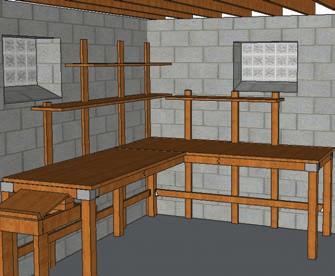
NAN: Your website—Chris Gammell’s Analog Life: Analog Electronics and Everything Else Between 1 and 0 (www.chrisgammell.com)—features useful information about electrical engineering. In the past year, you’ve covered some interesting projects: building an electronic workbench, putting an MP3 player and output stage board into an antique radio enclosure using KiCAD, and more. Tell us a little about those two projects. What was the impetus for each?
CHRIS: The first is pretty simple to explain: I was sick of working on an old tabletop that kept getting cluttered! I decided to design and build a custom workbench for my basement, based upon a design I cobbled together in Google SketchUp. A friend from work who had built similar workbenches in the past stopped by and helped me construct the frame. I did all the finishing and electrical work, an oft overlooked branch to most electrical engineers. I’m always amazed at how I can know the intricacies of a complex analog and digital circuit...and a light switch can still manage to trip me up occasionally!
The second is a work in progress. I wanted to have a way to pipe our podcast through a vintage radio, just for the look of it all. And while I was designing a new circuit, why not try out KiCAD, a program I had never previously used? I also thought I could get a couple of videos out of it. It turns out my ambition turned into a much longer project than I thought. So, like any engineer, I continue to push out the deadline and thank my lucky stars I This is the workbench Chris designed using Google SketchUp
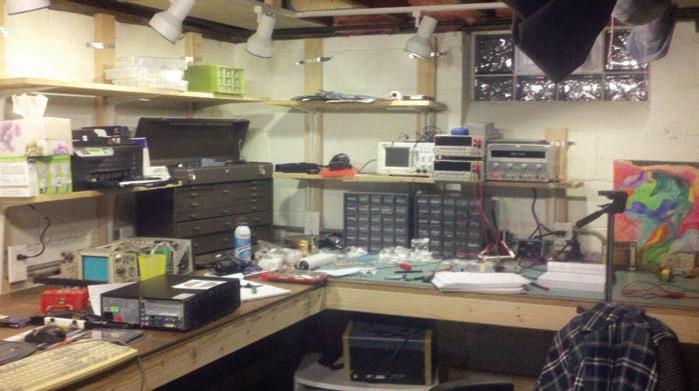
don’t have a manager on this project pushing me to get it done!
NAN: What inspired you to start your own site? Do you receive a lot of reader feedback? What types of questions/comments do you typically receive?
CHRIS: I started ChrisGammell.com back in 2007 for all the wrong reasons: I thought I was going to make money from it. To date, I still haven’t made any money from my websites, namely because I don’t like advertising being on the site. Also because I really don’t get that much traffic. The most-viewed article on my personal site is actually about how op-amps work, so I get a lot of beginner questions, especially if they have found me through Google. While I’m glad my articles help people out, I’ve moved on to other projects and don’t post as often on my personal site anymore.
Once I wised up and money no longer was the motivation behind my site, I took to what many people call “personal branding.” I’m not such a big fan of the term, and my opinion of it has changed over the years, but the basic idea is that you put out articles and other knowledge you might have so you are easier to find on the web. Or perhaps you become better known. My new thinking about this is that you should put out articles and write about things that interest you because you enjoy it and it keeps your mind sharp. The rest will come with time, especially if you have quality posts. Some of my favorite sites are on my RSS reader simply because they continue to post good articles or videos, week after week.
Yet another advantage—and a lesson I picked up from other consultants—is that writing about what you know and adding insight to the topic is a great way to advertise your services. If people are looking for microcontroller experts and you have just written a great piece on the finer points of programming or troubleshooting a microcontroller, that will help a potential client find you and be confident in your work. This is another reason I always encourage people to post technical and other articles under their real names on the Internet. Your article about JTAG chains today could help you get a client one, two, or 10 years down the line. You just never know.
NAN: Along with some other engineers, you also startedEngineerBlogs.org in 2011. Tell us a little about that site.
The finished workbench based on his design February 2012 – Issue 259
CHRIS: Engineer Blogs is the main place I post these days. I love that other engineers are interested in collaborating on a common site. It’s mostly “softer” topics of engineering, namely because we’re a common site for all types of engineers. While my circuit design experience might not be relevant to a mechanical engineer, I can guarantee the more general design principles (e.g., prototype early and often) are quite relevant.
Similar to my personal site, we don’t take advertising and there is no monetary benefit to any of the writers. So it’s mostly for personal development and “branding.” (There he goes again!) But really, it’s nice to have others to bounce ideas off of and have people who provide genuine feedback. The social pressure also keeps me on my toes and consistently posting an article per week. We just started taking guest bloggers, so if people are interested in joining up and trying out their literary skills, please get in touch.
NAN: What was the impetus for starting your radio show, The Amp Hour (www.theamphour.com) which you co-host with Dave Jones of the EEVblog?
CHRIS: I’m a member of the online community reddit, and actually an administrator of the ECE sub-group (http://reddit.com/r/ECE). Two years ago, there was a request on the site for podcasts and blogs featuring electronics, because the submitter wanted to learn more while in the car and on their bike. I tried a podcast by myself and it was dreadful. But once I posted it, Dave Jones happened to hear it and suggested we give it a shot together. We didn’t have much of a plan at first, just to get on the line and shoot the breeze for an hour or so. After the first two episodes, we began soliciting our listeners and Dave’s regular viewers for a name for the show. One of our listeners suggested “The Amp Hour” and it’s been roughly an hour-long show every week since. It’s one of my favorite times of the week and I’m so glad I have been able to continue doing the show, 70-some episodes later. If your readers haven’t had a chance to listen, I hope they will at some point in the future. I personally think the best time to listen to the show is on the way to or from work, or while sitting at your bench soldering.
NAN: Some recent Amp Hour interviewees included: Jeff Keyzer of the blog MightyOhm.com (December 2011); John Edmond, co-founder and director of Advanced Optoelectronics Technology at Cree (November 2011); and Joe Grand, president of Grand Idea Studio and a former member of the legendary hacker collective L0pht Heavy Industries (September 2011). How do you decide who to feature on the show? Can you tell us who has been your favorite or most memorable guest?
CHRIS: Your embedded programming readers out there undoubtedly know Jack Ganssle, who was a guest on our show. It was a ton of fun trading stories with him and hearing how the computer industry used to be driven by the demands of the... ahem...online adult industry. But really, all of our guests have been amazing. We choose guests who not only have interesting stories and work but also can chat about the weekly news and who enjoy electronics. I’m sure a couple of members of the Circuit Cellar audience will be in our sights as potential guests in the future!
NAN: Is there a particular electronics engineer, programmer, or designer who has been the inspiration for the sort of work you do today?
CHRIS: As I often talk about, analog engineering is the kind of stuff I usually specialize in. And, up until a few months ago, I had two shining beacons, not just of analog electronics but also technical writing. Bob Pease and Jim Williams might not be known as much to the microcontroller crowd, but you won’t find many analog guys and gals who didn’t know their names. Both were prolific writers and great engineers. Jim passed away from a stroke and Bob died tragically in a car accident on the way home from Jim’s memorial service. It was a great loss for the industry and I’ll miss their wit and insight.
I still have many others I look up to in the industry though, and I hardly have to look outside the workplace. Though not famous, I’ve had the opportunity to work with some wonderful engineers who have molded me and helped me on my journey, and I’m appreciative of all of them.
NAN: Are you working on or planning any other projects—including websites, podcasts, or blogs—for the near future?
CHRIS: Nothing new for the foreseeable future, only because of my newly started job (which I wrote about on Engineer Blogs http://engineerblogs.org/ 2011/12/weekend-journal-startingan-engineering-job). I will be designing large-scale systems and the workload might be significantly higher than my last job, something I’m looking forward to. With great responsibility, comes great hours spent at the office!
NAN: Like some of Circuit Cellar’s staffers, you travel to embeddedrelated conferences to check out the new technologies on the horizon. What embedded technology have you seen or worked with recently that really excited you?
CHRIS: Because I’m such a fan of FPGAs, I’m really interested in how they’re once again pushing hard processors back into chips and then surrounding it with programmable logic (Xilinx Zynq or the Altera Arria V). I think there are a lot of benefits to having customizable logic around a microcontroller and I hope that normally micro-only manufacturers begin integrating programmable logic as well. The benefits of parallel processes and offloading recurring tasks are often under emphasized, in my opinion. I





